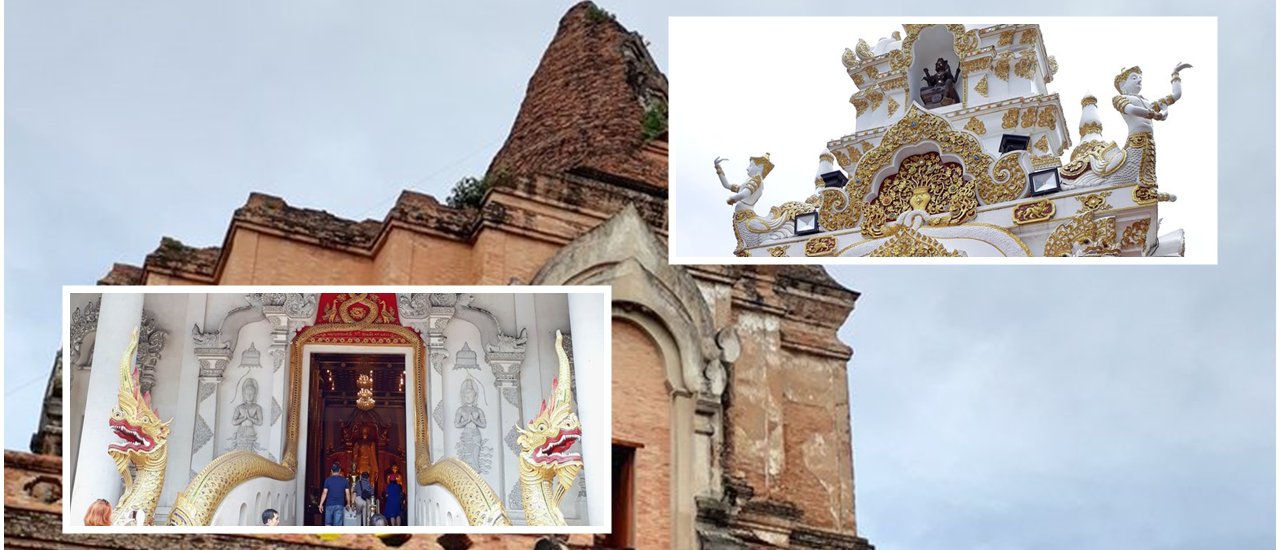Wat Chedi Luang Worawihan, also known as Wat Chotirataram, houses the largest chedi in Chiang Mai. Located in the heart of the city, it was once the administrative center of the Lanna Kingdom. Situated at 103 Phra Pok Klao Road, Phra Sing Subdistrict, Mueang District, it was built during the reign of King Saen Muang Ma, the 7th king of the Mangrai Dynasty. The exact year of construction remains unknown.

The entrance to the temple features a magnificent naga staircase, with the naga's tails intertwining to form an archway. This ancient naga sculpture is considered the most beautiful in northern Thailand.


This image has been granted permission for use by Workpoint Entertainment Public Company Limited, the producer of the "Khun Phra Chuai" program, for inclusion in the "Mangkorn Rabam" segment, which aired on November 12, 2017. The image guarantees its beauty.





The Pillar of the City
The Pillar of the City, also known as the Inthakin Pillar, was erected in 1296 CE by King Mengrai the Great during the founding of Chiang Mai. It stands within a small, four-sided pavilion in the Lanna architectural style. This pillar, crafted from a single large tree trunk, is embedded deep within the earth.




It contains beautiful paintings.

Inside the City Pillar Shrine




The giant Phraya Yak guards the Indrakhila pillar.



The Phra That Chedi Luang, the tallest stupa in northern Thailand (Lanna), stands at an impressive 80 meters. Its square base measures approximately 60 meters on each side. Constructed in the early 20th century, the stupa holds immense significance for Chiang Mai. It symbolizes the center of the universe, reflecting the belief that the stupa's height and central location within the city mirror Mount Meru, the cosmic center. However, a major earthquake in 2088 during the reign of Queen Mahadevi Chiraprabha caused the stupa's spire to collapse, leaving it in its present state.


The elephants surrounding the Phra That Chedi Luang served as a symbolic reinforcement of the city's power through the use of auspicious symbolism. The ritualistic veneration of the eight elephants was believed to bring good fortune and protect the city from enemy invasion.


Please follow our small travel page Fun Trip ^^
ไปแอ่วกัน Fun Trip
Tuesday, October 8, 2024 11:18 AM





















